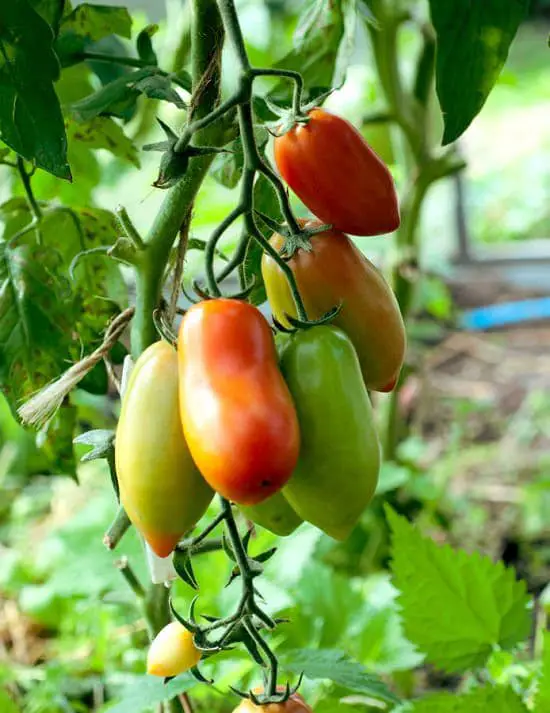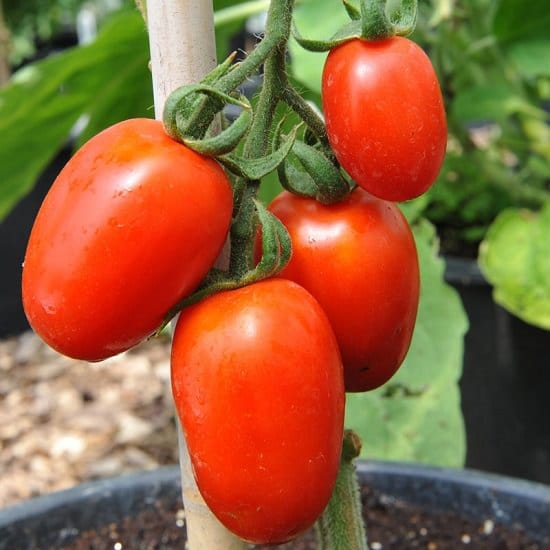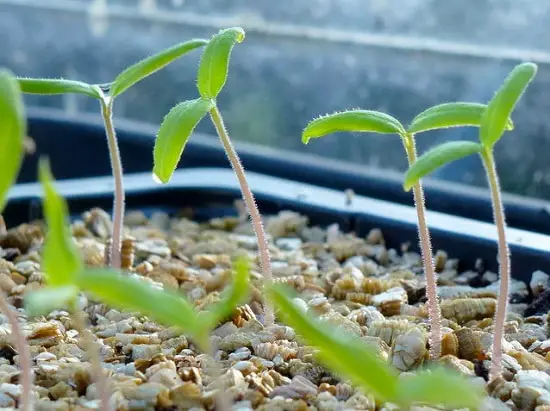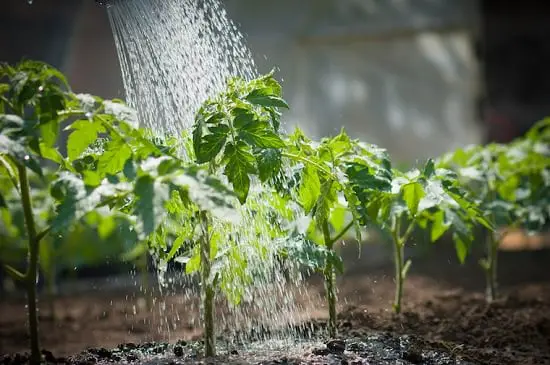Tomatoes don’t grow well outside in many states and if you wonder When to Plant Tomatoes in Georgia, you are at the right place!

Tomatoes are the most valued vegetable in the garden and there’s nothing like using organic and fresh ones in the kitchen! If you are looking forward to growing them and have questions about the best varieties and when to plant tomatoes in Georgia then read on the article and find the answers!
Check out our article on growing tomatoes in the balcony here!
Best Tomato Varieties for Georgia

Determinate
Determinate tomatoes are small plants that grow up to 4-5 feet tall. The fruit matures in a short period, in about two weeks. After the first set of fruit ripens, the plant diminishes and produces no to little fruit. Even though they have a compact size, trellis or staking is recommended, as the branches get heavier when the plant starts to grow fruits.
Roma tomatoes, San Marzano, Amish Paste, Celebrity, Marglobe, and Rutgers are some of the best determinate tomato varieties you can grow.
Here’s how you can grow Roma Tomatoes!
Indeterminate
Indeterminate varieties grow clusters of fruits during all seasons. When harvested on time, they continue to produce juicy fruits until frost. The best variety to grow is the bush and they do best when staked or grown in cages. If you are growing the vine types, make sure that you are providing the right support.
Most heirloom varieties are indeterminate, including the cherry and dwarf tomatoes. Beefsteak, Big Boy, Brandywine, Sungold, and Sweet Million are the best ones to grow.
Explore 25 Best Heirloom Tomato Plants here
When to Start Tomato Seeds in Georgia

Getting Started
You can grow tomatoes indoors from seeds as well. You can also get transplants from a nursery or a garden center. Using a light soil mix is apt for the plant and choosing a spot like a south-facing sunny window is a good idea. Transplant them to the garden, around mid-March to early May when the frost has passed.
Note: If you live in a Southern part of Georgia, you can also go in for a second crop if planted in late July.
Planting
In Georgia, start planting from mid-March to early May. If you are living in the Southern region of the state, then you can plant anytime in this phase. Whereas in Northern Georgia, plant after mid-April.
Note: If you are living in Northern Georgia, protect the plants from cold and take the plants indoors at night in September and October.
Spacing
If you are planning for stake or trellis, space the plants 20-25 inches apart. Staking or trellis help the plant in making them disease-free and produce good quality fruit. You can use a commercial trellis or have a weaving system of stakes and cord.
Check out our article on growing ring culture tomatoes here!
Also Read: Best Potting Soil for Tomatoes
Container Size
A 12-15 inches deep pot or bucket, with drainage holes at the bottom, is sufficient for growing most varieties. Avoid taking smaller pots as the plant gets root-bound because of the widespread root system and results in low yield. Also, avoid using terra cotta pots as they can be difficult to move.
Requirements for Growing Tomatoes in Georgia

Soil
Tomatoes prefer well-draining soil, rich in organic matter. Tilling the garden soil with compost, rotted sawdust, or other humus is also a good idea. The plant requires soil with a pH range of 6.2-6.8. If the soil is low in pH, you can add dolomitic limestone, as per recommendations.
Mulching
Mulch the plant after transplanting, it will benefit around the stem. Using a weed-free straw, compost, or chopped leaves aid in retaining moisture and control weed growth. Mulch the plant to the depth of 2-3 inches. You can also use 3-4 sheets of newspaper, across the plants, as a weed barrier. It is also going to help conserve moisture.
Fertilizing
Use a 10-10-10 fertilizer, every 4-5 weeks, for the optimum growth of the plant. If you are using a liquid soluble fertilizer, make sure you are not using it excessively as it leads to excess nitrogen, which can hamper the fruit production.
Watering
Water your plants thoroughly, 1-2 times a week. Avoid sprinkling now and then. Always go for heavy soakings. You can also opt for drip irrigation or soaker hoses as these will ensure that the plants get the right amount of water, helping them to conserve moisture. This also saves the foliage from getting wet, which can be a cause of diseases.
Note: While going for the drip irrigation method, put the hose under the mulch layer.
Harvesting
Start harvesting tomatoes when they are fully ripened. You can also pick them when they turn green and allow to ripen at home. Put unripe, green tomatoes in a room with a temperature of 70 F (21 C). Place the fruit in a well-ventilated area and make sure they’re not packed together.
You can keep fully ripened tomatoes in the refrigerator to prolong their life for weeks. However, do not refrigerate the unripened fruit.


